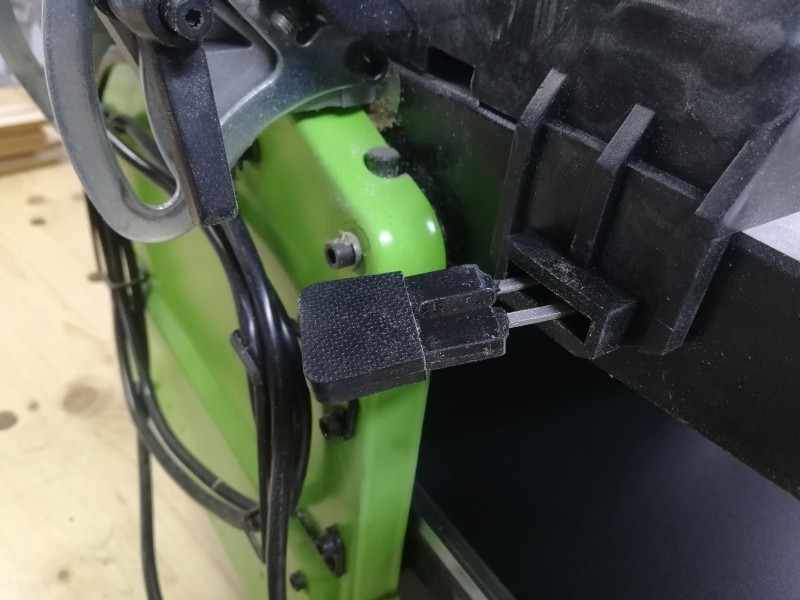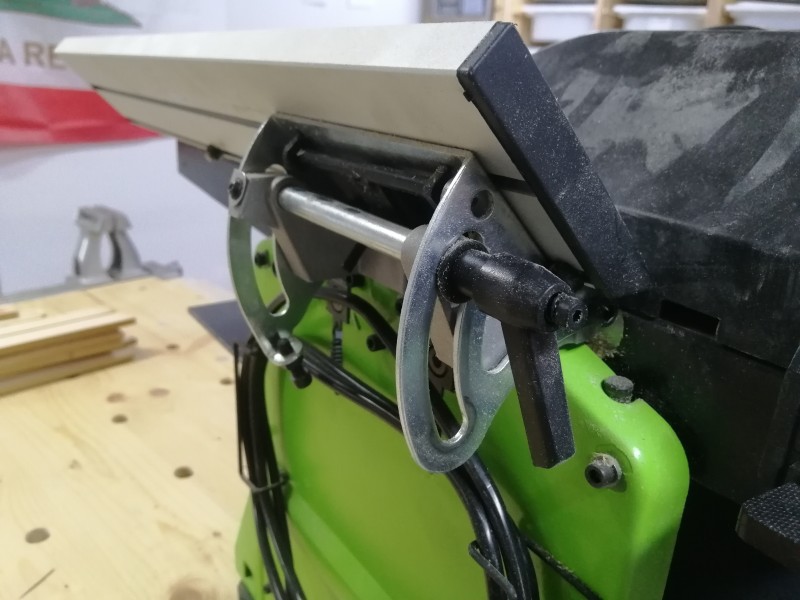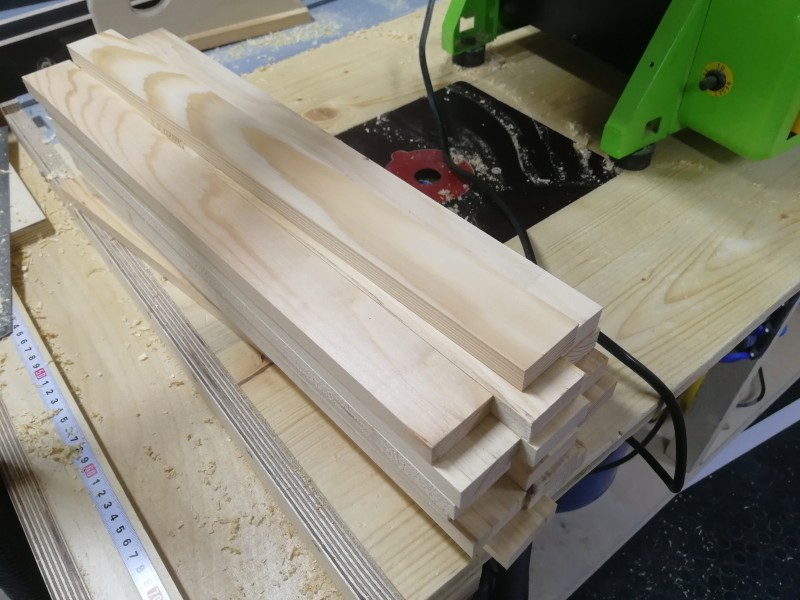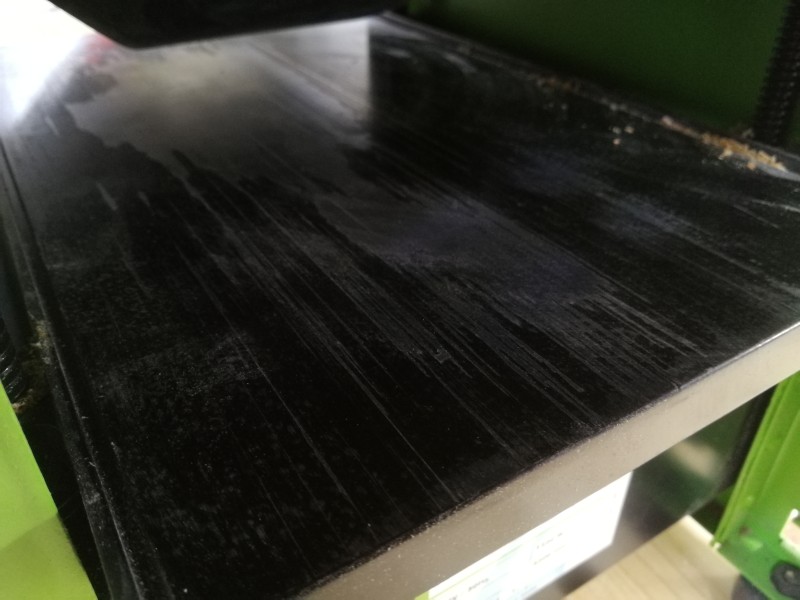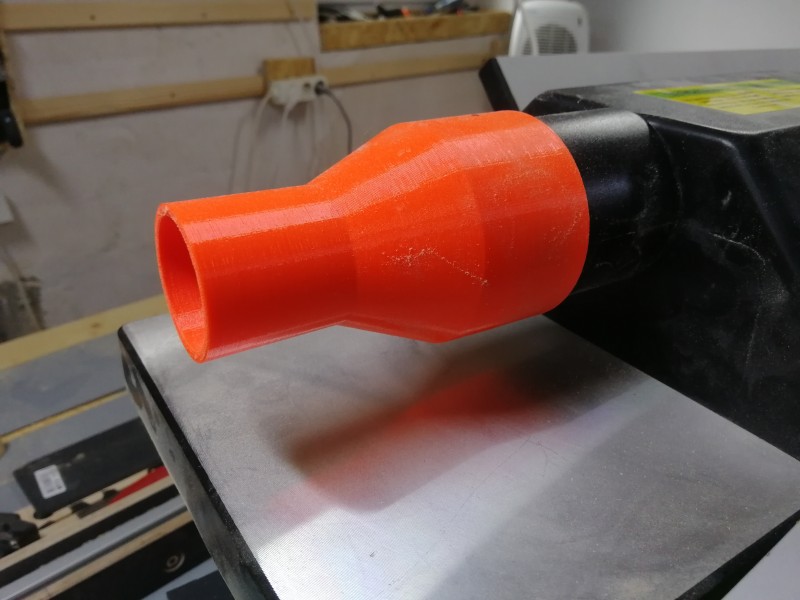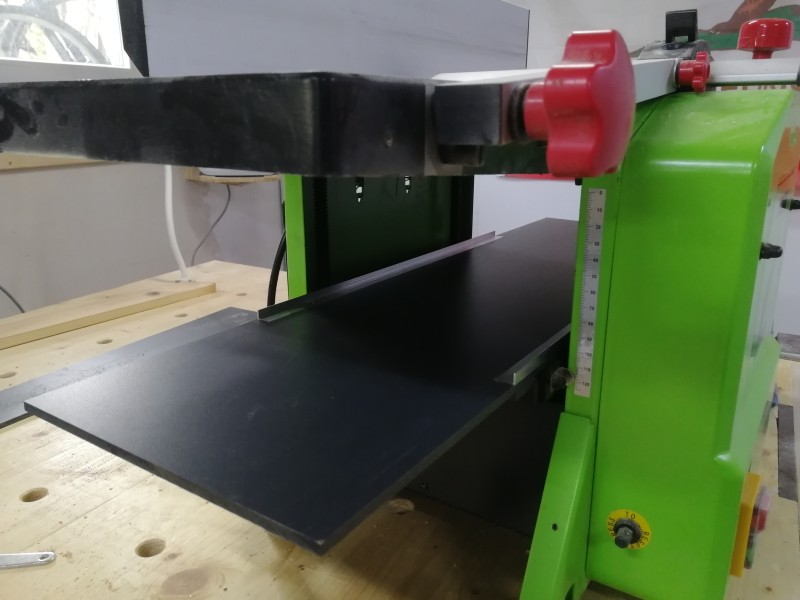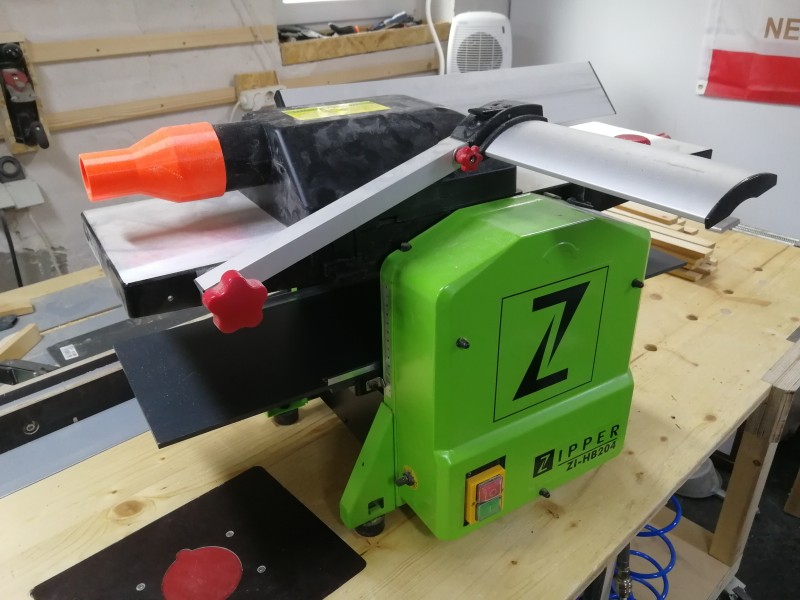Tool Time: Zipper ZI-HB204
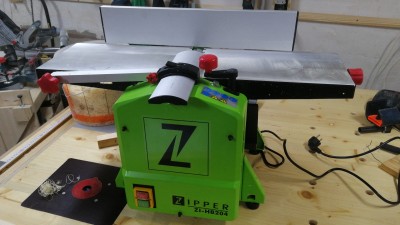 As hinted at in my last post, I got a new tool. The Zipper ZI-HB204 thickness planer and jointer.
As hinted at in my last post, I got a new tool. The Zipper ZI-HB204 thickness planer and jointer.
If you watch a lot of wood worker's YouTube videos (as I do), you will notice that most of them either work in plywood or they plane all their real lumber before using it. And it makes sense, a natural material like wood tends to be imperfect, bent, twisted, of different thickness, etc. Running your wood through a planer helps with all of that.
YouTubers seem to really like the DeWalt DW733. But (successful) YouTubers are rich. I couldn't justify to buy a 700+ EUR machine, I only occasional use…
So I looked into what is available in the lower price ranges. What you will find there is combined thickness planer and jointer devices. On a first glance they all look pretty much the same:

Basically all of these machines have a spinning blade in the center that can be accessed from the top to be used for jointing or from the bottom for thickness planing.
After reading a lot of Amazon reviews, the Zipper seemed to be slightly better than the others, so that's what I decided to buy. So here is what I think about it.
The good parts
Switching between jointing and planing is simple and once you're used to it takes just a few seconds. With all these combo machines, you have to move the dust collector to either above or below the spinning blade, depending on what you want to do. Other manufacturers seem to require screws for this. The zipper uses simple latches. One of them contains a wire bridge that is used as a safety switch - the machine will not start without the dust collector. The latches seem flimsy at first but work quite well.
When switching from jointing to planing, the jointer fence needs to be moved out of the way. This is done with two clamps. Even doing so repeatedly returned the fence always back to an exact 90° angle. The fence once locked is also surprisingly sturdy.
The height adjustment is smooth and works well. One full turn is 3mm which is quite a lot, so you need to get used to quarter rotations.
The mediocre parts
The HB204 comes with a set of replacement blades and additional blades are relatively inexpensive. So far I only used it with spruce, but I guess the blades will not last long with proper hardwood.
The mechanism to set how much material is removed by the jointer is a bit janky. Eg. you turn the knob for a while without anything happening, before the table suddenly jerks further than you wanted. I simply set it once to about half a millimetre and never touched it again.
The bad parts
Snipe1). There is some noticeable snipe with the thickness planer. Part of that is caused by the rather short bed (see below for a solution) but mostly it is because of how it is constructed: before the rollers can contact the board on both sides of the blade, slightly uneven pressure is applied with the blade.
I did expect some snipe and it isn't too bad. It's mostly rather cosmetic than a significant difference in thickness. So I can live with it.
What's really stupid is the planer bed. While the jointer table is brushed aluminium that works just fine, the planer bed is painted steel sheet. That wouldn't be too bad if the paint wouldn't start rubbing off with your very first board you send through. All your boards will come out with black streaks on them. I don't know what they were thinking.
An easy fix would be to sand the paint off the bed, but I decided for a different solution (see below).
Modifications
The very first thing I needed to do, was to 3D print an adapter to connect my shop vac to the dust extraction hood. You don't want to run this machine without dust extraction - it creates a ton of shavings!
I used Vacuum hoses adapter (parametric) by dinask to create the model.
To fix the stupid planer bed, I decided to build an extension that fits on top and also makes the bed longer. This helps to prevent long boards tipping over and prevents at least one cause of snipe.
To build the bed extension I used some kind of dense particle board2). To ensure that boards cant slide off the bed at the sides, I glued on some angled aluminium guide rails (using the router table to make them flush). Two pieces of particle board at the bottom prevent slipping.
Summary
I think for about 270€ this is a capable machine with bearable flaws. Good enough for hobbyists like me.
